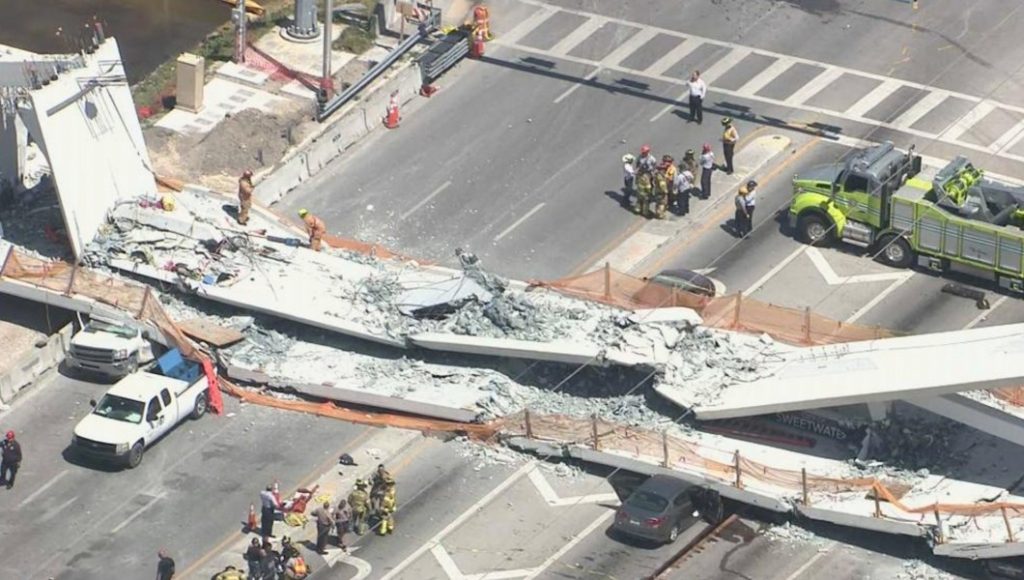Florida International University officials were filled with pride when they swung the 950-ton concrete bridge section over a highway. The pedestrian bridge on the edge of the Miami-area campus was a signature achievement of the University’s Transportation Center. FIU president Mark B. Rosenberg said, “FIU is about building bridges and student safety. This project accomplishes our mission beautifully. We are filled with pride and satisfaction at seeing this engineering feat come to life and connect our campus to the surrounding community.”
However, only five days later, the bridge collapsed on the six-lane highway, crushed cars and killed at least six people. It is not yet clear what caused the collapse but it has cast a spotlight on the rapid construction technique. The Accelerated Bridge Construction or ABC involves the assembly of large sections of a span offsite and then moving the huge piece to the site at once. Using this technique eliminates the lengthy road closings and other traffic disruptions. These disruptions result when a bridge is built on a highway piece by piece.
The general approach has been around since the mid 19th century and has been used safely and successfully since then. However, the interest in the ABC technique has increased in the recent years when states started looking to get quicker and cheap ways to build new bridges, In the case of Florida tragedy, the engineering experts are trying to find out where the fatal mistake happened. Civil engineering experts who viewed the project details are raising questions about how FIU approached the project.
To some engineers the decision of installing the main concrete segment over a busy road before building its main support tower was confusing. As traditionally, the tower is built first. Henry Petroski, a professor of civil engineering at Duke University said, “It’s odd. That’s probably why they used this so-called ABC method, so they could get the span over the roadway in one operation because if you do it incrementally, you have to interrupt traffic.” Investigators will also look at the companies who were building the project.
Professor Amjad Aref, a researcher at the University at Buffalo, department of civil engineering said that it was unclear what the builders at FIU were using in place of a tower to support the segment which collapsed. The bridge has some cables to support it and the part which collapsed had two smaller pylons on each end. Aref said, “Until all the pieces are put together to transmit the loads safely to the foundations, these bridges may suffer disproportionate or full collapse due to instability. Typically, this process requires a few weeks. During that time, they are often supported by another system to ensure stability because they are really vulnerable to collapse.”
He added, “I am really puzzled that the tower does not exist.” Utah was using the technique since 2007. Since then it became a primary way to build the bridges. Almost 200 bridges were built using the technique. The chief structural engineer with the states Transportation Department, Carmen Swanwick, said she has no concerns about Utah’s bridges and they are inspected every year. She said, “I have no concerns. We believe it improves quality. A lot of times, the component or the bridge itself is constructed in a more controlled environment.”
Engineers said that the method has been using the method in other projects for many years. It is generally safer than other methods as well. Michael Culmo, a bridge engineer said, “What really bothers me is with ABC, the benefits are so substantial that I would hate to see this accident lead to its reduced use. While this is a tragedy, the process itself is very safe.”
What is your opinion on rapid building techniques? Let us know in the comments section.

